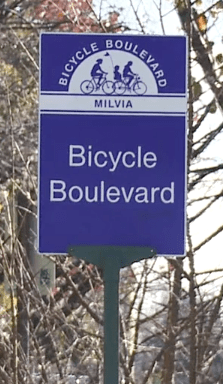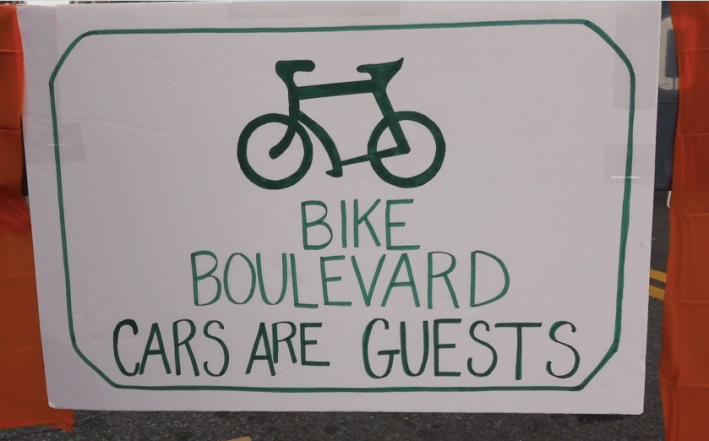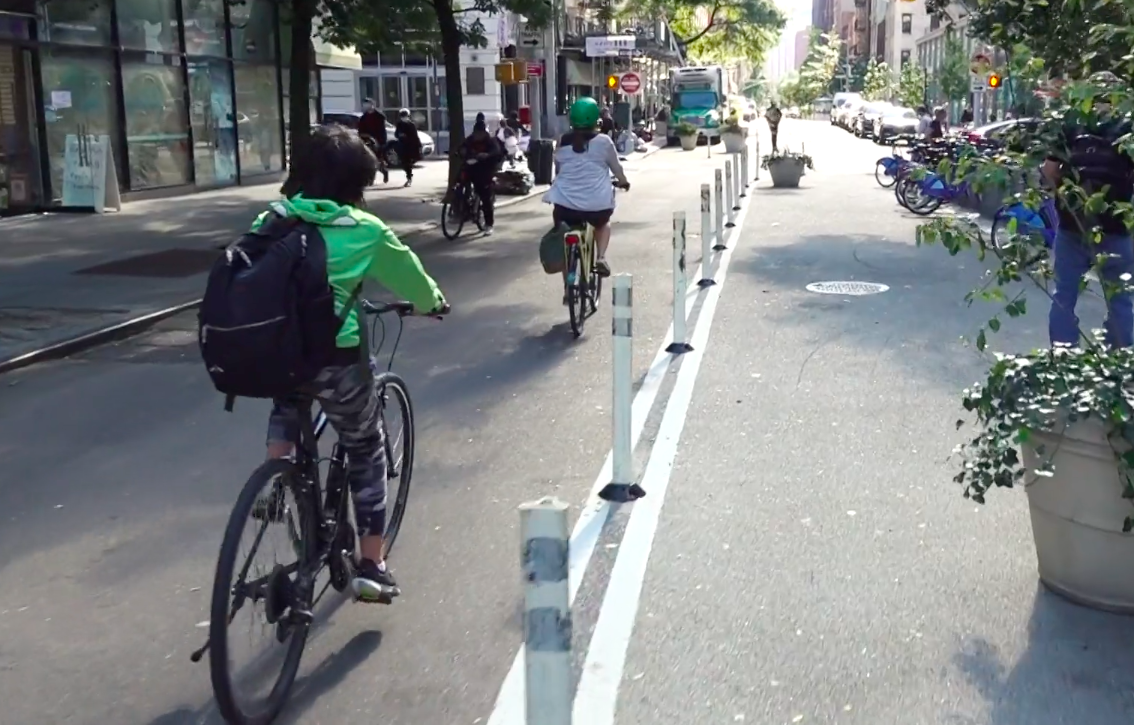Our city’s bike infrastructure falls short of forming a safe, connected, and comfortable network. Many New Yorkers do not ride because they are afraid of getting hurt, and even where bike lanes exist, much of what the Department of Transportation builds fails to provide adequate physical separation from drivers.
Safe streets proponents have concentrated their efforts on getting more protected bike lanes, not only for safety, but to build ridership — but political and logistical delays often delay the basic safety improvements. The result is 10 to 20 new miles of protected bike lanes per year, barely making a dent in a city of 6,000 miles of streets.

But there's a better way: Rather than physically reconfigure streets, cities such as Portland and Pittsburgh have found that simply diverting vehicles off of designated residential streets — a strategy called "bike boulevards" — is a quick, cheap and easy way to create a network of low-stress cycling routes.
Bike boulevards solve one of the most basic problems of cycling: comprehending the hodgepodge of streetscapes: greenways, park paths, protected bike lanes, painted lanes, sharrows and, most frightening, streets with no bike infrastructure at all. Quiet, residential streets — converted to bike boulevards — can provide a safe alternative route because such roads already have little traffic and vehicle speeds are already low.
Just a few tweaks can divert the existing drivers and slow them down so that inexperienced riders and kids can feel comfortable — safe from drivers who barrel around corners or zoom between lights and stop signs, or simply use neighborhood roads as shortcuts.
The DOT is obviously aware. The agency's “Green Wave" plan, released last year after a record number of cyclists were killed, included a menu of design treatments intended to make biking safer and more comfortable citywide, including “bike boulevards to prioritize cyclists and limit vehicles on appropriate streets.”
None has been installed or even piloted yet, but the city’s COVID-era “open streets” program turned out to be bike boulevards by another name. (See the Streetfilms video below.)
Simply discouraging drivers from using these streets made them safer, quieter, and less-stressful for new riders and families with young children, making them not just safer routes, but safe places to become comfortable with biking.
Bike boulevards prioritize bike travel with a light and flexible toolkit. New York City can create a network of them cheaply and quickly by:
- requiring drivers to turn off at frequent intervals by diverting them with simple, sturdy barriers
- implementing “green wave” signal progression to encourage slower speeds
- deploying frequent signage reminding drivers to “slow down” and that “cars are guests.”
Connecting these Bike boulevards to form a low-stress network will unlock routes that currently only the bravest road warriors traverse.
Other cities have found bike boulevards politically popular because local access for drivers (including parking spaces) are typically maintained, while all residents benefit from safer, quieter streets.

Bike boulevards are not the perfect bike infrastructure. But most New York neighborhoods have few safe bike routes, and a comprehensive bike network covering the whole city is decades away. With the same simple toolkit of signs and barricades as open streets, hundreds of miles of bike boulevards could be deployed in a matter of months allowing the city to finally respond to the issues facing cyclists at the scale of the problem rather than the limited ability of the bureaucracy to build protected bike lanes.
Bike boulevards are an initiative of the new civic group, City Rise. Find out how to volunteer, or get more information, by visiting the group's website. Follow CityRise on Twitter @cityrisenyc.






